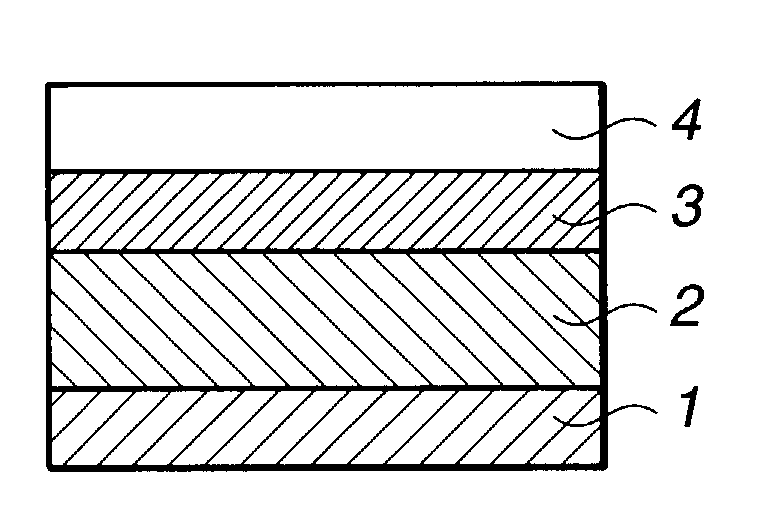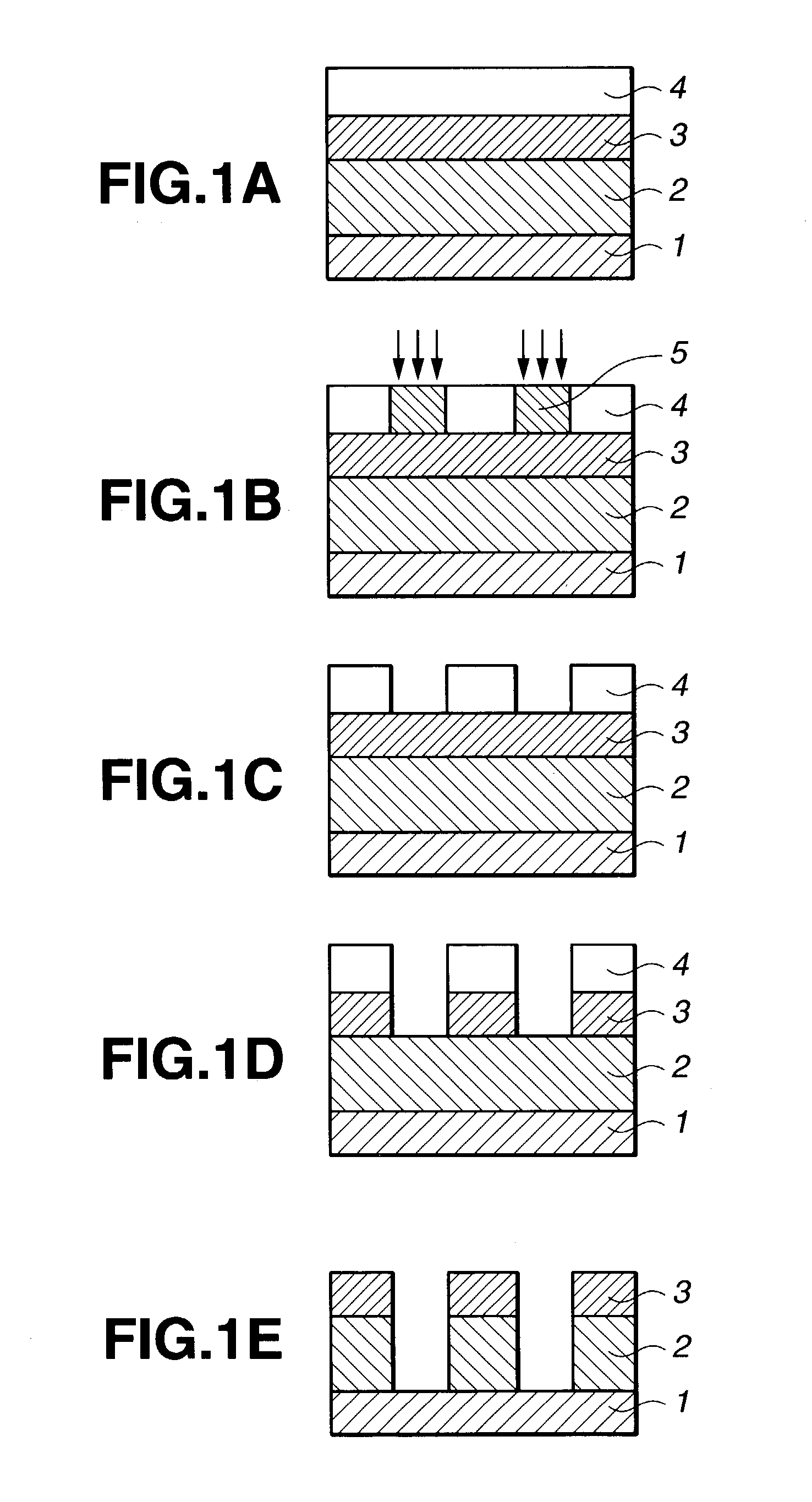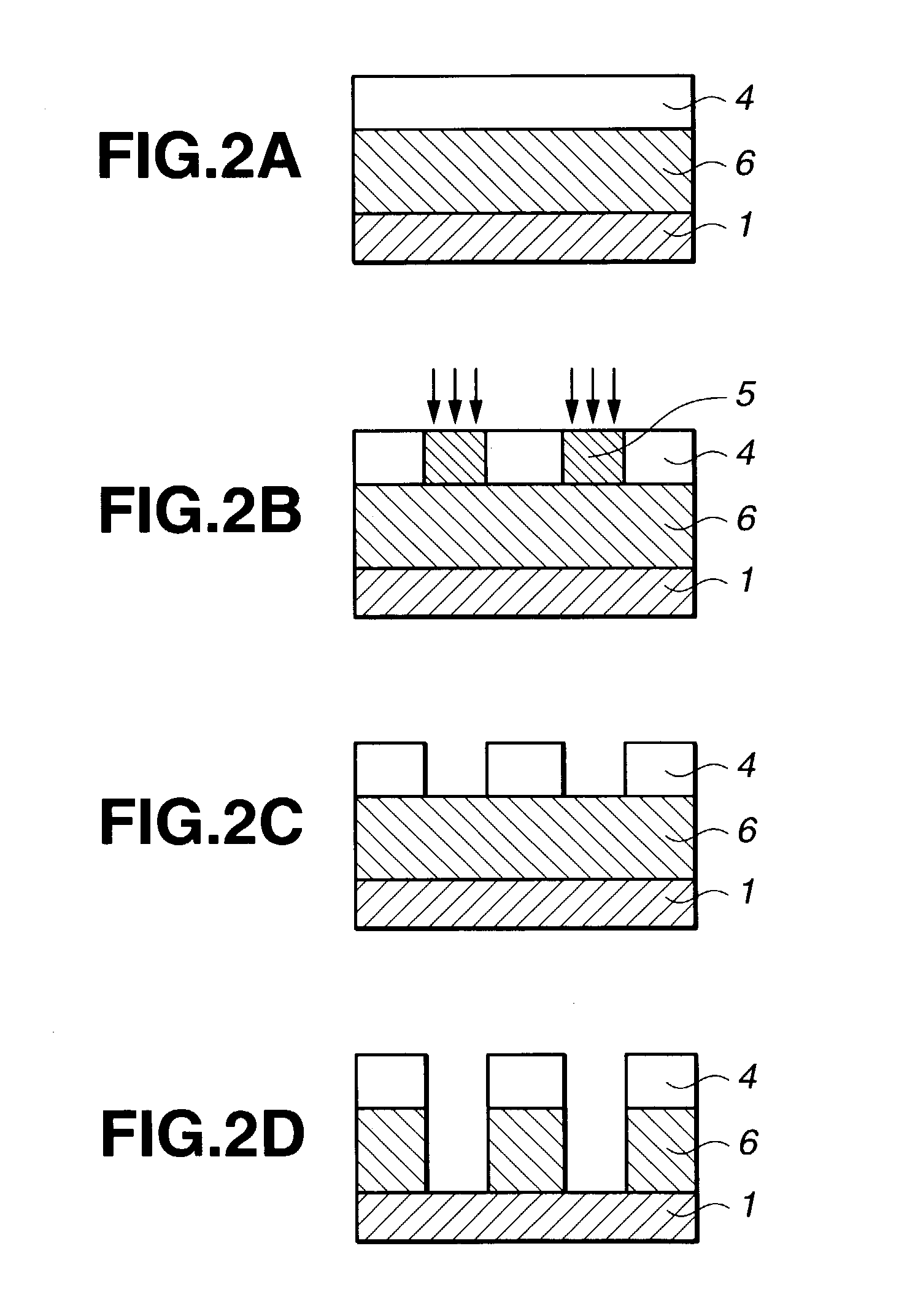Resist composition and patterning process
a composition and patterning technology, applied in the field of resist composition and patterning process, can solve the problems of inability to use resist as the base resin, inability to ensure transparency, and more difficulty in ensuring transparency, so as to minimize the roughness of the line edge, the effect of high sensitivity and high resolution
- Summary
- Abstract
- Description
- Claims
- Application Information
AI Technical Summary
Benefits of technology
Problems solved by technology
Method used
Image
Examples
synthesis example 1
Synthesis of tris(trimethylsilyl)silylethyl methacrylate (Monomer 1) / 3-oxo-2,7-dioxatricyclo[4.2.1.04.8]-9-nonyl methacrylate (monomer 2) / p-hydroxystyrene copolymer (15:25:60), Polymer 1
[0287]In a 1-liter flask, 60 g of tris(trimethylsilyl)silylethyl methacrylate, 80 g of 3-oxo-2,7-dioxatricyclo[4.2.1.04.8]-9-nonyl methacrylate and 100 g of p-hydroxystyrene were dissolved in 560 ml of THF. The flask was thoroughly purged of oxygen and then charged with 5.5 g of the initiator AIBN. The flask was heated to 60° C., at which polymerization reaction was conducted for 24 hours.
[0288]The polymer product was worked up by pouring the reaction mixture into a solvent mixture of hexane / ether (3 / 2) for precipitation. The polymer was separated. There was obtained 168 g of a white polymer that is a tris(trimethylsilyl)silylethyl methacrylate / 3-oxo-2,7-dioxatricyclo[4.2.1.04.8]-9-nonyl methacrylate / p-hydroxystyrene copolymer (copolymerization ratio 15:25:60), designated Polymer 1.
[0289]Polymer 1 ha...
synthesis example 2
Synthesis of 1,4,4-trimethyl-4-silacyclohexyl methacrylate (monomer 3) / 3-oxo-2,7-dioxatricyclo[4.2.1.04.8]-9-nonyl methacrylate (monomer 2) / p-hydroxystyrene copolymer (40:20:40), Polymer 2
[0290]In a 1-liter flask, 75 g of 1,4,4-trimethyl-4-silacyclohexyl methacrylate, 37 g of 3-oxo-2,7-dioxatricyclo[4.2.1.04.8]-9-nonyl methacrylate and 40 g of p-hydroxystyrene were dissolved in 300 ml of THF. The flask was thoroughly purged of oxygen and then charged with 3.4 g of the initiator AIBN. The flask was heated to 60° C., at which polymerization reaction was conducted for 24 hours.
[0291]The polymer product was worked up by pouring the reaction mixture into a solvent mixture of hexane / ether (3 / 2) for precipitation. The polymer was separated. There was obtained 121 g of a white polymer that is a 1,4,4-trimethyl-4-silacyclohexyl methacrylate / 3-oxo-2,7-dioxatricyclo[4.2.1.04.8]-9-nonyl methacrylate / p-hydroxystyrene copolymer (copolymerization ratio 40:20:40), designated Polymer 2.
[0292]Polymer...
synthesis example 3
Synthesis of t-butyl methacrylate / tris(trimethylsilyl)-silylethyl methacrylate (monomer 1) / 3-oxo-2,7-dioxatricyclo-[4.2.1.04.8]-9-nonyl methacrylate (monomer 2) / p-hydroxystyrene copolymer (10:15:25:50), Polymer 3
[0293]In a 1-liter flask, 28 g of t-butyl methacrylate, 60 g of tris(trimethylsilyl)silylethyl methacrylate, 65 g of 3-oxo-2,7-dioxatricyclo[4.2.1.04.8]-9-nonyl methacrylate and 88 g of p-hydroxystyrene were dissolved in 560 ml of THF. The flask was thoroughly purged of oxygen and then charged with 5.5 g of the initiator AIBN. The flask was heated to 60° C., at which polymerization reaction was conducted for 24 hours.
[0294]The polymer product was worked up by pouring the reaction mixture into a solvent mixture of hexane / ether (3 / 2) for precipitation. The polymer was separated. There was obtained 177 g of a white polymer that is a t-butyl methacrylate / tris(trimethylsilyl)silylethyl methacrylate / 3-oxo-2,7-dioxatricyclo[4.2.1.04.8]-9-nonyl methacrylate / p-hydroxystyrene copolyme...
PUM
| Property | Measurement | Unit |
|---|---|---|
| LogP | aaaaa | aaaaa |
| wavelength | aaaaa | aaaaa |
| wavelength | aaaaa | aaaaa |
Abstract
Description
Claims
Application Information
 Login to View More
Login to View More - R&D
- Intellectual Property
- Life Sciences
- Materials
- Tech Scout
- Unparalleled Data Quality
- Higher Quality Content
- 60% Fewer Hallucinations
Browse by: Latest US Patents, China's latest patents, Technical Efficacy Thesaurus, Application Domain, Technology Topic, Popular Technical Reports.
© 2025 PatSnap. All rights reserved.Legal|Privacy policy|Modern Slavery Act Transparency Statement|Sitemap|About US| Contact US: help@patsnap.com



